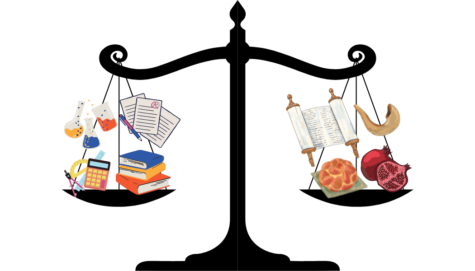The Flaws of the AP System
Every year at the beginning of May, hundreds of Shorecrest students, and millions of American students, are required to miss almost an entire day of school to take a national AP test. Many of those students take multiple AP tests, meaning they need to miss multiple classes to take these tests. The administration of these national standardized tests results in millions of students missing out on time in the classroom.
Beginning in 1955, the advanced placement program was a product of the Cold War as Americans feared their youth were falling behind in education compared to the Soviet Union. The Ford Foundation initially funded the program, and it was eventually taken over by the College Board, who currently run it today. Today, AP classes are college-level courses offered in high school for ambitious students hoping to get into more prestigious universities and gain a better understanding of whatever subject the course covers. There are a total of 38 AP classes offered, with US History, Psychology, Computer Science, and 2-D Art Design being just a few. After taking the rigorous class throughout the year, the content culminates in the AP test. Every student in a specific course takes the same AP tests. Graded on a 5-point scale, anyone scoring a 3 or higher is eligible for college credit, further incentivizing students to take the test and strive for success.
 While early college preparation is inherently a good thing, the AP system is rooted in inequity. To start, taking the test comes with about a $93 fee. For many students, this immediately makes the test inaccessible. Blocking the exam behind a paywall immediately discourages low-income students from signing up for the test. While some schools, such as Shorecrest, do provide scholarships for low-income students, it is yet another obstacle blocking access to the exams. Furthermore, even for students that can afford the exam, many other factors can affect how they perform in the class and on the test. Students facing housing insecurity, working after-school jobs, struggling with mental health, and more are at a disadvantage. However, students that come from wealthier backgrounds have access to other resources, such as extra time to study after school, mental health therapy, and some even invest in extra tutoring specific to AP classes. When performance on these tests influences college admission, it further represses the lower class and elevates the upper class with better access to those extra resources and the benefits of attending selective institutions.
While early college preparation is inherently a good thing, the AP system is rooted in inequity. To start, taking the test comes with about a $93 fee. For many students, this immediately makes the test inaccessible. Blocking the exam behind a paywall immediately discourages low-income students from signing up for the test. While some schools, such as Shorecrest, do provide scholarships for low-income students, it is yet another obstacle blocking access to the exams. Furthermore, even for students that can afford the exam, many other factors can affect how they perform in the class and on the test. Students facing housing insecurity, working after-school jobs, struggling with mental health, and more are at a disadvantage. However, students that come from wealthier backgrounds have access to other resources, such as extra time to study after school, mental health therapy, and some even invest in extra tutoring specific to AP classes. When performance on these tests influences college admission, it further represses the lower class and elevates the upper class with better access to those extra resources and the benefits of attending selective institutions.
Students’ performance on AP tests also has an impact on the funding districts receive from the state. In 2016, twenty states offered financial incentives, such as teacher bonuses, to districts with high AP scores. This sounds like a great idea, as it would encourage teachers to better prepare their students for the AP tests, resulting in better all-around education. However, this system is backward. Districts with low performance on AP tests are the ones that need financial bonuses. With better access to resources, students have more opportunities to score better on AP tests. When districts with already high-performing students receive financial stipends, they will continue to score well, while the progress of districts with low performance will stagnate.
Another fault of the AP test system is the unwarranted stress it puts on students. The way most AP classes are structured, the course works to prepare you for the exam. When an entire year’s worth of classes is dedicated to one single test, students tie their performance on the test to their self-worth, similar to how students tie their grades to their self-worth. This is extremely problematic as it puts extreme pressure on students to perform well. Junior Lucy Carli said this about her experience taking the AP Language test: “Preparing for the exam was pretty overwhelming, especially having them the week after spring break, everything kind of hit me all at once.” For Lucy, the AP test fell the week after her spring break, due to Shoreline’s particularly late spring break. Returning to take an approximately 4-hour standardized test after a week’s break from academics is a tall ask of high school students.
 The formatting of these tests is yet another issue pertaining to the AP system. The tests are supposed to only take 2-3 hours; usually, with the lengthy directions from proctors, the passing out of materials, and the actual test, it’s a 4-5 hour process. The test itself is extremely taxing on students. “I wish they would’ve given us a break between the MCQ and the SAQ to mentally prepare for the shift,” states Hayley Cox, following the AP US history exam. For the AP US history exams, the College Board required students to answer 55 multiple choice questions based on some sort of stimulus. Then students have to respond to 9 different short answer questions, and then compose 2 essays based on different prompts. Requiring students to do all of this work does not result in an accurate assessment of their knowledge, as by the end of the test students are completely fatigued.
The formatting of these tests is yet another issue pertaining to the AP system. The tests are supposed to only take 2-3 hours; usually, with the lengthy directions from proctors, the passing out of materials, and the actual test, it’s a 4-5 hour process. The test itself is extremely taxing on students. “I wish they would’ve given us a break between the MCQ and the SAQ to mentally prepare for the shift,” states Hayley Cox, following the AP US history exam. For the AP US history exams, the College Board required students to answer 55 multiple choice questions based on some sort of stimulus. Then students have to respond to 9 different short answer questions, and then compose 2 essays based on different prompts. Requiring students to do all of this work does not result in an accurate assessment of their knowledge, as by the end of the test students are completely fatigued.
The AP system is historically founded on inequality, financial inaccessibility, and mentally taxing work for all students. Yet, it is practically a necessity for acceptance into prestigious universities. Of course, there are other viable options, such as trade schools, community colleges, and going straight into the workforce, but 75% of US students plan to attend higher education after college, including 59% who plan to go to a four-year college. The College Board has established a broken system that benefits them exclusively – forcing privileged students to struggle to stay afloat and essentially throwing underprivileged students overboard.













